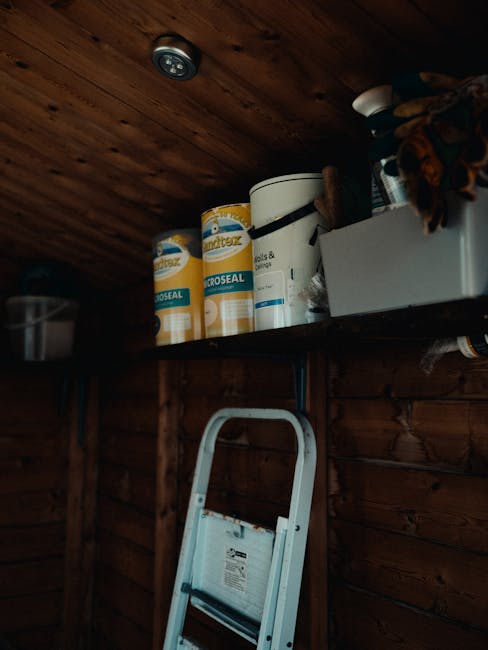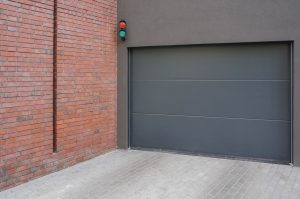Are you tired of clutter taking over your garage? Imagine having a neat, organized space where everything has its place.
Building your own DIY garage shelf can make that happen—and it’s easier than you think. You’ll discover simple steps and smart tips to create sturdy shelves that fit your needs perfectly. Ready to transform your garage and reclaim your space?
Let’s get started!
Benefits Of Diy Garage Shelves
Building your own garage shelves offers many benefits. It saves money and lets you customize the space. DIY shelves improve organization and make your garage safer. You control the design, size, and materials, fitting your exact needs. This project can also be a fun and rewarding experience.
Cost-effective Storage Solution
DIY garage shelves cost less than buying pre-made units. You choose affordable materials and avoid shipping fees. This keeps your project budget-friendly. Saving money leaves room for other garage upgrades.
Custom Fit For Your Space
Build shelves that match your garage layout perfectly. Adjust height, width, and depth to fit your items. Tailor the design to your tools, boxes, and sports gear. This maximizes storage without wasting space.
Improved Organization
Custom shelves help sort items clearly and neatly. Tools stay easy to find and access. Your garage looks tidy and clutter-free. This reduces stress and saves time searching for things.
Durability And Strength
Select strong materials for heavy loads. DIY shelves can hold bikes, boxes, and equipment safely. Building them yourself means you know they are sturdy. No worries about shelves breaking or sagging.
Personal Satisfaction And Skill Building
Completing a shelf project brings pride and confidence. You gain new woodworking skills. This project can inspire future DIY work. Hands-on work feels rewarding and fun.
Choosing The Right Materials
Choosing the right materials for your DIY garage shelf can make all the difference in durability and functionality. The materials you pick affect how much weight your shelves can hold and how they will stand up to the typical garage environment. Think about what you plan to store and how you want your shelf to look before making a decision.
Wood Types And Their Strengths
Wood is a popular choice for garage shelves because it’s easy to work with and looks good. Plywood and pine are affordable and widely available, but they might not hold up well under heavy loads or moisture. On the other hand, hardwoods like oak or maple are stronger and last longer but cost more and require more effort to handle.
Consider how much weight you want your shelves to carry. Are you storing heavy tools or just boxes? This will help you decide if you need a solid hardwood or if a good-quality plywood will do the job.
Metal Shelving For Heavy Duty Use
Metal shelves are tough and handle heavy items without bending or breaking. Steel is the most common metal used, and it can be powder-coated to resist rust and corrosion. Metal might be harder to cut and assemble compared to wood, but it offers superior strength for bulky garage storage.
If you want a shelf that will last for years and hold power tools or paint cans, metal could be the best option. Do you have the right tools and skills to work with metal, though? This is important to consider before choosing.
Plastic And Composite Materials
Plastic and composite shelves are lightweight, resistant to moisture, and easy to clean. They don’t warp or rust, which is great for garages that get damp. However, they often can’t hold as much weight as wood or metal shelves.
Think about what you’ll store and how often you’ll use the shelves. If you need a light-duty option for small items or gardening supplies, plastic might be perfect. But if you need serious strength, you might want to look elsewhere.
Hardware And Fasteners Matter Too
Choosing the right screws, brackets, and anchors is just as important as picking shelf materials. Even the strongest wood or metal won’t hold if the hardware isn’t up to the task. Use heavy-duty brackets for metal shelves and sturdy wood screws for wooden shelves.
Have you checked if your wall can support the weight? Sometimes using wall anchors or studs makes a big difference. Don’t overlook this step—it’s key to a safe and reliable shelf.
Essential Tools For Building
Building a DIY garage shelf needs the right tools. These tools make the work easier and help create a strong shelf. Using proper tools saves time and keeps the project safe. Below are the essential tools to gather before starting.
Measuring And Marking Tools
- Tape measure for accurate length checks
- Pencil to mark cutting and drilling spots
- Square ruler to ensure right angles
- Level to keep shelves straight and balanced
Cutting Tools
- Hand saw for simple wood cuts
- Power saw for faster, precise cuts
- Utility knife for trimming small parts
Drilling And Fastening Tools
- Electric drill to make holes and drive screws
- Screwdriver set for manual screw tightening
- Hammer for nailing pieces together
- Clamps to hold pieces firmly while working
Safety Equipment
- Safety goggles to protect your eyes
- Work gloves to protect your hands
- Ear protection for noisy tools
- Dust mask to avoid inhaling sawdust
Step-by-step Construction Guide
Building a garage shelf yourself saves money and customizes your space. A clear plan helps avoid mistakes and wasted materials. Follow this guide to build sturdy, functional shelves step by step. Each phase focuses on simple actions and safety.
Measuring And Planning
Start by measuring your garage wall space carefully. Note the height, width, and depth available for shelves. Decide what items you want to store and their sizes. Sketch a simple layout showing shelf positions and spacing. Choose materials based on weight capacity and budget. Plan for tools and hardware needed for assembly.
Cutting And Assembly
Cut wood or metal pieces to your planned shelf dimensions. Use a saw suitable for your material and wear safety goggles. Smooth edges with sandpaper to avoid splinters. Assemble shelves on a flat surface using screws or nails. Check each joint for tightness and stability. Pre-drill holes to prevent wood from splitting.
Securing To Walls
Locate wall studs with a stud finder for strong support. Mark positions where shelf brackets will attach. Use heavy-duty anchors if studs are unavailable. Attach brackets firmly with screws into studs or anchors. Mount shelves onto brackets and test their strength. Add extra support if shelves feel loose or weak.
Creative Design Ideas
Creative design ideas can transform your garage shelf from just a storage spot into a smart, functional space that fits your unique needs. Think about how you use your garage daily and what kind of items you need to store. This perspective helps you choose designs that save space and keep everything within easy reach.
Adjustable Shelving
Adjustable shelving lets you change the height of shelves easily. This flexibility is perfect if you store items of different sizes, like tall paint cans or small toolboxes.
You can start with a basic frame and add brackets that slide up and down. This way, you customize your shelves as your storage needs evolve. Have you ever struggled to fit bulky items on fixed shelves? Adjustable shelves solve that problem by adapting to your gear.
Corner Shelves
Corner shelves make use of often overlooked space in your garage. They fit snugly into corners, turning wasted areas into valuable storage spots.
These shelves work well for smaller items like jars, screws, or spray cans. Building corner shelves can also give your garage a neat, organized look without taking up much room. What small items do you keep lying around that could fit perfectly in a corner shelf?
Overhead Storage
Overhead storage frees up floor space by using the ceiling area above your garage. This is ideal for storing seasonal items or things you don’t use daily.
You can install sturdy racks or platforms suspended from the ceiling. Just make sure they are secure and easy to access with a step stool or ladder. Could your garage benefit from more overhead storage to clear clutter below?
Tips For Organization
Organizing your DIY garage shelf can transform a cluttered space into a functional area where everything has its place. Clear organization not only saves you time but also reduces stress when searching for tools or supplies. Let’s look at some practical tips to keep your garage shelves neat and easy to use.
Use Clear Containers And Labels
Clear containers help you see what’s inside without opening them. Pair these containers with bold, easy-to-read labels to quickly identify contents. This simple approach prevents you from digging through boxes and keeps small items like screws and nails sorted.
Group Similar Items Together
Arrange your shelves by categories—paint supplies on one shelf, gardening tools on another. Grouping similar items lets you find what you need faster and keeps your space tidy. Have you noticed how much easier it is to work when everything is in one spot?
Maximize Vertical Space
Don’t let the height of your garage go to waste. Add extra shelves or hooks above your main shelving units to store less frequently used items. This frees up shelf surface for everyday tools and keeps the floor clear.
Keep Frequently Used Items Accessible
Place the tools and materials you use most often at eye level or within easy reach. This small change speeds up your projects and encourages you to put things back in their spot. Think about what you grab daily—are those items easy to find?
Incorporate Adjustable Shelving
Adjustable shelves allow you to customize your storage space as your needs change. You can fit taller items or rearrange shelves to accommodate new tools. This flexibility keeps your garage ready for any project.
Maintaining Your Garage Shelves
Maintaining your garage shelves keeps them strong and useful for years. Simple care helps avoid damage and clutter. Regular checks and cleaning improve shelf life and organization.
Inspect Shelves For Damage
Look closely at each shelf for cracks or bends. Check brackets and screws to ensure they are tight. Replace any broken parts to prevent accidents.
Clean Shelves Regularly
Dust and dirt can build up on shelves quickly. Use a damp cloth to wipe surfaces clean. Avoid harsh chemicals that may damage the shelf material.
Organize Items Properly
Group similar items together to make finding things easier. Avoid overloading shelves with heavy objects. Keep heavier items on lower shelves for safety.
Protect Shelves From Moisture
Garage moisture can cause wood to warp and metal to rust. Use a dehumidifier or ventilation to reduce humidity. Apply protective coatings on wooden shelves if needed.
Adjust Shelves When Necessary
Change shelf height or position to fit new storage needs. Make sure adjustments are secure to maintain stability. Flexible shelves help keep the garage organized over time.
Frequently Asked Questions
What Materials Are Best For A Diy Garage Shelf?
Wood, metal brackets, and screws are ideal for DIY garage shelves. Plywood or solid wood offers durability. Metal brackets provide strong support. Choose treated wood for moisture resistance. Quality materials ensure shelf stability and longevity.
How Do I Install A Diy Garage Shelf Safely?
Use a stud finder to locate wall studs. Secure brackets firmly into studs with screws. Wear safety gear like gloves and goggles. Measure and level shelves before drilling. Follow instructions carefully to prevent accidents and ensure shelf stability.
What Tools Are Needed For Building A Garage Shelf?
Basic tools include a drill, screwdriver, level, tape measure, and saw. A stud finder helps locate wall studs. Safety gear like gloves and goggles is essential. These tools make installation easier and ensure precise, sturdy shelves.
How Much Weight Can A Diy Garage Shelf Hold?
Weight capacity depends on materials and installation. Properly mounted shelves on studs can hold 50-100 pounds or more. Use heavy-duty brackets for heavier loads. Distribute weight evenly to prevent sagging or damage.
Conclusion
Building a DIY garage shelf saves space and keeps things neat. You control the size and style to fit your needs. Materials are easy to find and costs stay low. With simple steps, you can make a strong, useful shelf.
Organize tools and items better with your new shelf. Start small, then add more shelves as needed. A tidy garage helps you find things fast and work better. Give your space a fresh look with this easy project.








